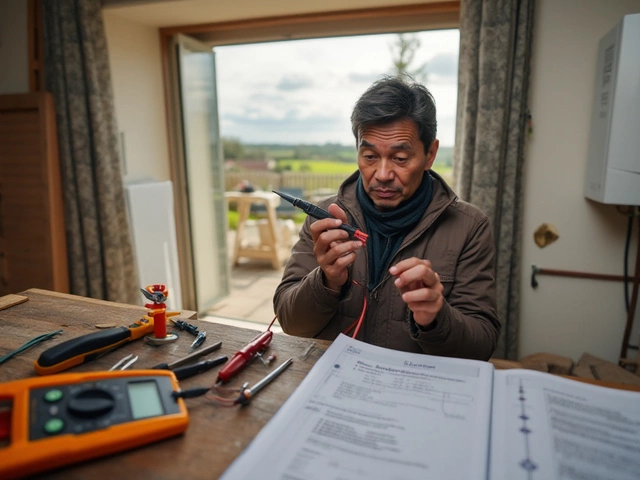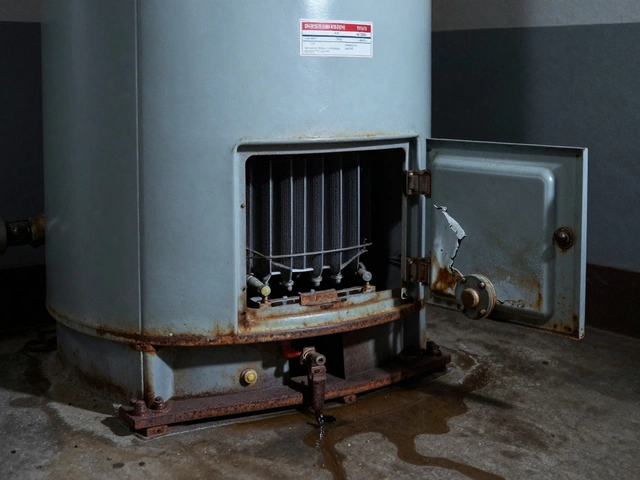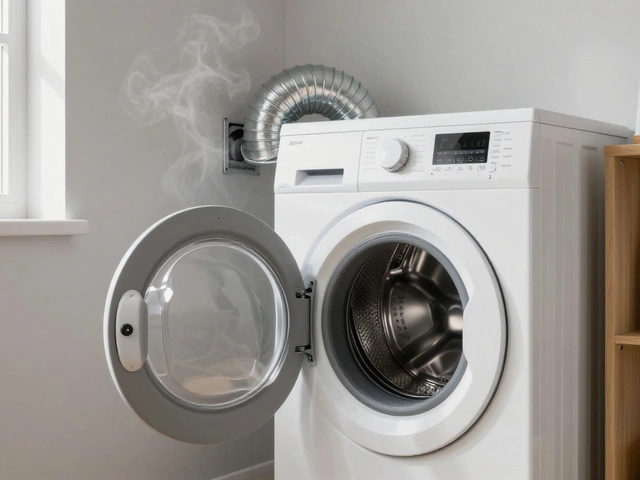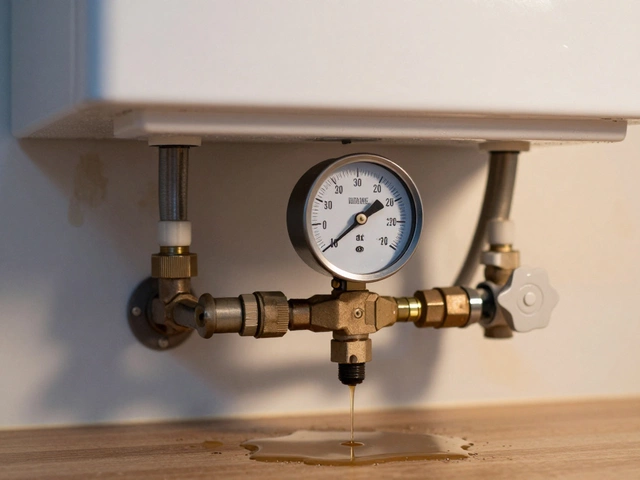Water heaters are one of those unsung household heroes, diligently working away to provide hot showers, warm baths, and spotless dishes. But when they fail, it can be quite a shock to our comfort and routine. Ever wondered why these trusty appliances seem to give out just when you need them most?
In this piece, we'll delve into some of the typical reasons behind water heater failures, offering insight into what might be causing these unexpected breakdowns. Whether it’s due to sediment, corrosion, or just poor installation, understanding the root causes can help you keep your heater in good shape longer.
And because knowledge is power, we’ll also share some handy maintenance tips that could save you from untimely cold showers. Let’s ensure your next encounter with a water heater issue doesn’t catch you off guard.
- Understanding Your Water Heater
- Common Causes of Heater Failure
- The Impact of Sediment Buildup
- Preventative Maintenance Tips
- When to Call a Professional
Understanding Your Water Heater
Water heaters are commonplace in modern homes, a vital part of our day-to-day lives. Despite their ubiquity, many people don't know much about how they function. In essence, a water heater's primary role is to heat water and supply it at the right temperature to the various faucets and appliances in your house. The two most common types are tank-type heaters and tankless models. Each has its own set of characteristics, benefits, and quirks.
Tank-type water heaters, which are the most traditional, store a large volume of water in a tank, keeping it heated around the clock. This method ensures there is always hot water available, but it can lead to energy wastage as the heater works to maintain the water's temperature even when not in use. On the other hand, tankless water heaters, often called 'on-demand' heaters, heat the water only as it is needed. This is typically more efficient, though the initial installation can be more complex and costly.
The common components of a water heater include the tank, thermostat, heating element (or burner for gas heaters), sacrificial anode, and a pressure relief valve. The sacrificial anode is a crucial component that helps prevent rust inside the tank by attracting corrosive elements to itself, thus sacrificing its integrity to protect the tank. The pressure relief valve is a safety feature designed to open if the pressure inside the tank reaches dangerous levels, preventing potential explosions.
The importance of regular maintenance cannot be overstated. Over time, minerals in the water, such as calcium and magnesium, tend to settle at the bottom of the tank. This sediment buildup can significantly decrease the efficiency and lifespan of your water heater. "Maintenance is key," emphasizes **Bob Vila**, a well-regarded name in home improvement. "Flushing your tank every six months can help eliminate sediment and prevent major malfunctions."
Diagnosing issues with a water heater often involves listening for strange noises, noting inconsistent water temperatures, or spotting leaks around the unit. These signs may indicate underlying issues, such as a defective thermostat or a leaking tank. Understanding these signs can save homeowners from dealing with a full-blown failure down the line. Considering the significant role water heaters play in our homes, the importance of knowing how they work and conducting regular maintenance becomes obvious.
Common Causes of Heater Failure
Water heaters work tirelessly behind the scenes to keep our homes warm and cozy, and their failure can be attributed to several key factors. One of the most prevalent issues is sediment buildup. Over time, minerals and other particles from the water supply accumulate at the bottom of the heater's tank. This sediment layer acts like a barrier between the burner and the water, forcing your heater to work harder to reach the desired temperature. The increased workload can overheat the bottom of the tank, leading to faster wear and tear, reduced efficiency, and ultimately, failure. Regularly flushing your water heater can help you avoid this common pitfall and keep your appliance running smoothly.
Rust and corrosion also rank high on the list of water heater ailments. Your water heater is constructed of steel and protected by a glass liner; however, once that lining becomes compromised, moisture can lead to rust. This corrosion weakens the tank and creates leaks that can cause serious damage if left unchecked. An essential component called the anode rod protects your tank by attracting corrosive elements, but over time it wears out and requires replacement. Checking the state of the anode rod and replacing it about every five years is a small yet impactful step to prolonging your water heater's life.
Improper installation can doom a water heater from the start. Whether it’s the wrong size tank for your household's needs or incomplete connections, these installation errors can drastically reduce a heater's efficiency and lifespan. A professional installer ensures that your heater is the right fit for your home and follows the correct setup procedures. This initial investment in expertise can save you from future headaches and repair bills.
"When it comes to water heater problems, prevention is key," says Bob Vila, a well-known home improvement expert. "Routine maintenance is much cheaper than emergency repairs, and it keeps water heaters running longer and more efficiently."
Additionally, temperature settings can play a significant role in premature damage. Setting your heater too high increases the risk of overheating, which stresses the unit and shortens its operational life. The Department of Energy advises that setting your water heater’s thermostat to 120 degrees Fahrenheit is optimal for both energy savings and safety. It decreases the chances of scalding accidents and reduces the stress on the heating elements, thus extending the appliance’s longevity.
- Ensure the correct installation by hiring a professional
- Replace the anode rod every five years
- Regularly flush the tank to remove sediment
- Set the thermostat to 120°F for safety and efficiency
- Regularly inspect for leaks or corrosion
By being aware of these common challenges and preemptively addressing them through care and maintenance, you can keep your water heater in top condition and avoid the unpleasant surprise of a cold shower.
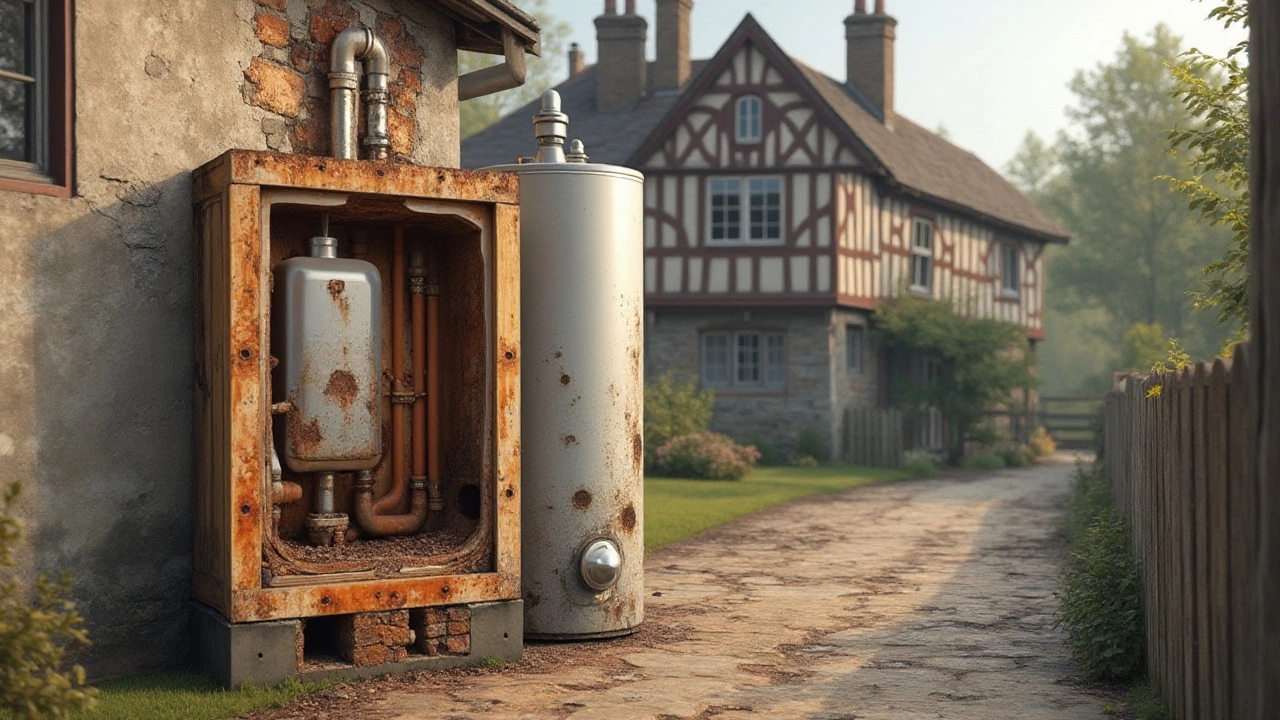
The Impact of Sediment Buildup
Imagine your water heater as a bustling workplace. Over time, things get a little cluttered, filled with forgotten files or papers. This accumulation isn't as harmless as it is in an office, though. In the case of a water heater, the sediment is a byproduct of using hard water which leaves behind minerals like calcium and magnesium. These minerals settle at the bottom of the tank and eventually form a thick layer. It's like trying to get any work done when your desk is covered in stuff you don't need. Mechanical components can’t move efficiently, and, over time, performance drops significantly.
Now, let's consider how this impacts the efficiency of your heater. When sediment buildup is significant, the heater must work much harder to bring the water to your desired temperature because it has to heat the sediment first. This not only makes your energy bills appear scarier each month—nobody likes that—but also speeds up wear and tear on the unit. The life expectancy of a water heater then plummets faster than an ice cube on a summer's day. In fact, a tank burdened with sediment is at a higher risk of overheating, which can lead to cracks and leaks.
Recognizing the Signs of Sediment Buildup
How can you tell if sediment is building up? There are some tell-tale signs that your water heater might be struggling with sediment. A popping or rumbling noise might emerge as the water bubbles through the layer of sediment. It's like a pot of pasta bubbling on the stove when the heat is on too high. You might also notice less hot water than usual because the heater’s capacity is reduced by the sediment."Regular maintenance is key to water heater efficiency. Annually flushing the tank can prevent most sediment issues," says John Smith, a leading water heater technician.While most don’t notice this until it's too late, others might get lucky by paying attention early enough to make a difference.
Addressing sediment buildup isn't a complicated process. Regularly flushing your water heater is like cleaning that cluttered desk. It helps prevent these problems before they grow beyond simple fixes. This means once or twice a year, draining your tank to remove this unwanted material. It might sound like a hassle, but the peace of mind and savings in potential repair bills make it worthwhile. If you’re not comfortable doing it yourself, a professional can always lend a hand. Taking a proactive stance isn’t just smart; it's necessary to safeguard the longevity of your hot water supply.
Preventative Maintenance Tips
When it comes to keeping your water heater running smoothly, a little bit of preventative measure goes a long way. Just as you wouldn’t skip your car’s oil change, regular check-ups for your water heater are essential. First, every water heater’s worst enemy is sediment—it’s basically tiny particles floating in your water. Over time, this sediment builds up at the bottom of the tank, reducing efficiency and potentially damaging the tank. To combat this, make it a habit to flush your water heater tank once a year. Doing this helps remove any buildup, ensuring your water heater remains efficient, giving you those blissful hot showers you love.
Next, consider testing the Temperature and Pressure Relief valve, often abbreviated as the T&P valve, about once a year as well. This valve is an important safety feature that prevents your heater from reaching excessive pressures. Testing involves lifting the valve lever to see if water comes out; if not, it might be time for a replacement. And while you’re at it, inspecting the anode rod should be on your maintenance checklist. This rod attracts corrosive elements, sacrificing itself to prevent rust from eating away at the inner lining of the heater. Typically housed inside the tank, you’ll want the rod to remain about half an inch in diameter. Any thinner, and it’s time for a new one.
"A water heater’s lifespan can often be doubled with proper maintenance," notes the U.S. Department of Energy in their guide to energy efficiency.
Thirdly, adjusting the thermostat to a safe and efficient setting not only saves energy but prolongs the heater’s life. The Environmental Protection Agency suggests setting it at 120°F for maximum efficiency and safety, which also helps avoid scalding accidents and limits the wear on the water heater’s components. Finally, for those with a water heater over a decade old, a yearly service by a professional can be key in preempting larger issues. They can spot signs of trouble that an untrained eye might miss, ensuring small problems don’t snowball into costly repairs.
Think of these steps as pampering your water heater, much like a spa day boosts your mood and energy. Take the time, follow these tips, and you’ll likely enjoy more years out of your reliable water heater, warding off unexpected breakdowns and cold water surprises. Keep up with these maintenance tasks, and you’ll be rewarded with a steady supply of hot showers, economic savings, and the assurance of a well-maintained home appliance.
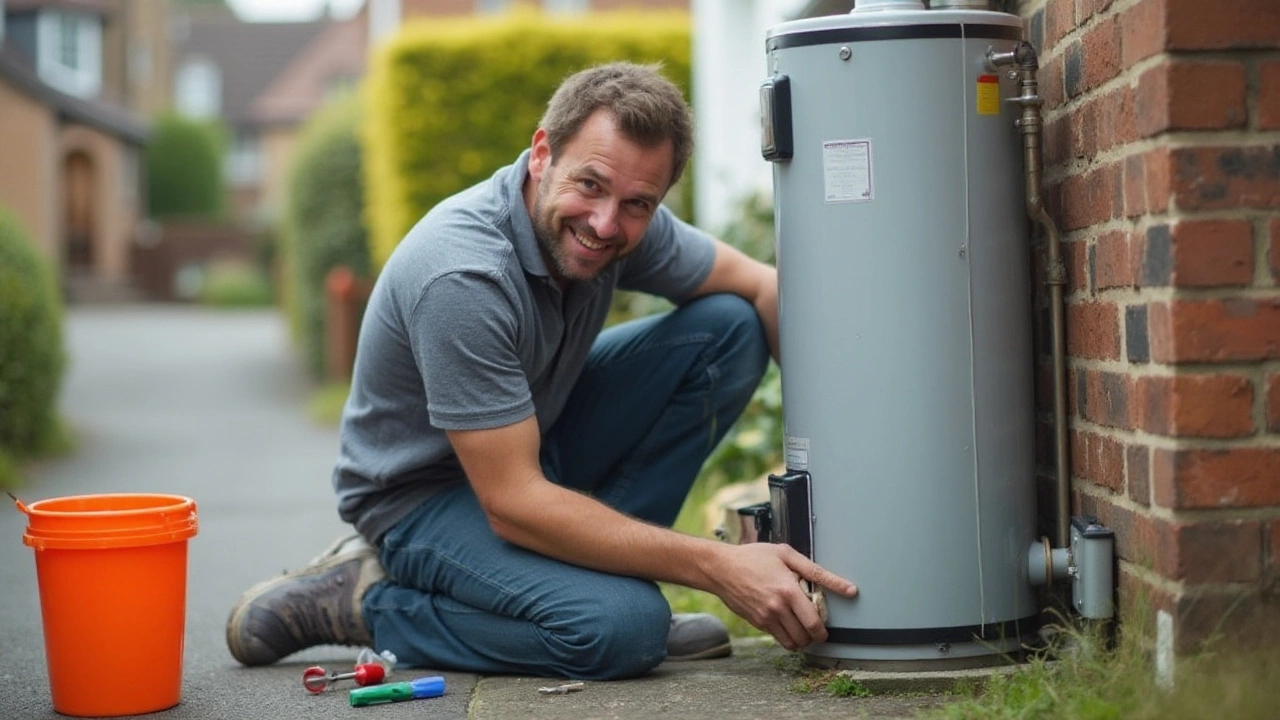
When to Call a Professional
Even with the best care and regular maintenance, your trusty water heater might still give you trouble that’s beyond your expertise. Recognizing the signs of severe issues early can save you from more extensive damage and costly repairs. You should consider reaching out to a professional when there is a significant dip in the hot water supply, especially if the water turns cold faster than usual. This might signal a problem with the heating elements, which needs more than just a quick fix.
Another red flag is strange noises emanating from the heater. Noises like banging or popping usually mean sediment buildup, causing the tank to overheat or even potentially leak. An experienced technician can flush the system or check for deeper issues. Also, if you notice rusty water, this could indicate corrosion inside the tank—a sign your water heater might be nearing the end of its lifespan. To assure it’s not a problem with your water pipes instead, a professional inspection is wise.
Leaks around the base of the water heater are signals that you shouldn't ignore. Water pooling signifies possible damage to the tank, which often requires immediate attention and could demand replacement. Besides, if you observe any visible signs of rust or corrosion, it’s time to bring in a licensed expert who possesses the right tools and knowledge to evaluate the situation.
"A professional technician is equipped with specific training to diagnose and rectify complex issues, preventing further unnecessary wear and tear," says John Clifford, a seasoned plumbing expert.
Don't overlook the importance of a strange smell, either. If your hot water has a metallic taste, it could indicate mineral deposits inside your tank, or worse, an electrical fault. Professionals can test the water for contamination and service the system as needed. Lastly, if your energy bills are inexplicably high, this might relate to a faulty thermostat or heating element—both of which a professional should assess and correct.
Remember that regular maintenance by a professional can enhance the efficiency and longevity of your water heater. So, if it feels like your heater isn't performing at its best or your DIY repair attempts have hit a wall, it’s wise to entrust the issue to someone with the right experience to handle it safely and effectively. Ultimately, investing in professional help not only relieves stress but also ensures the reliability of your system in the long run.



